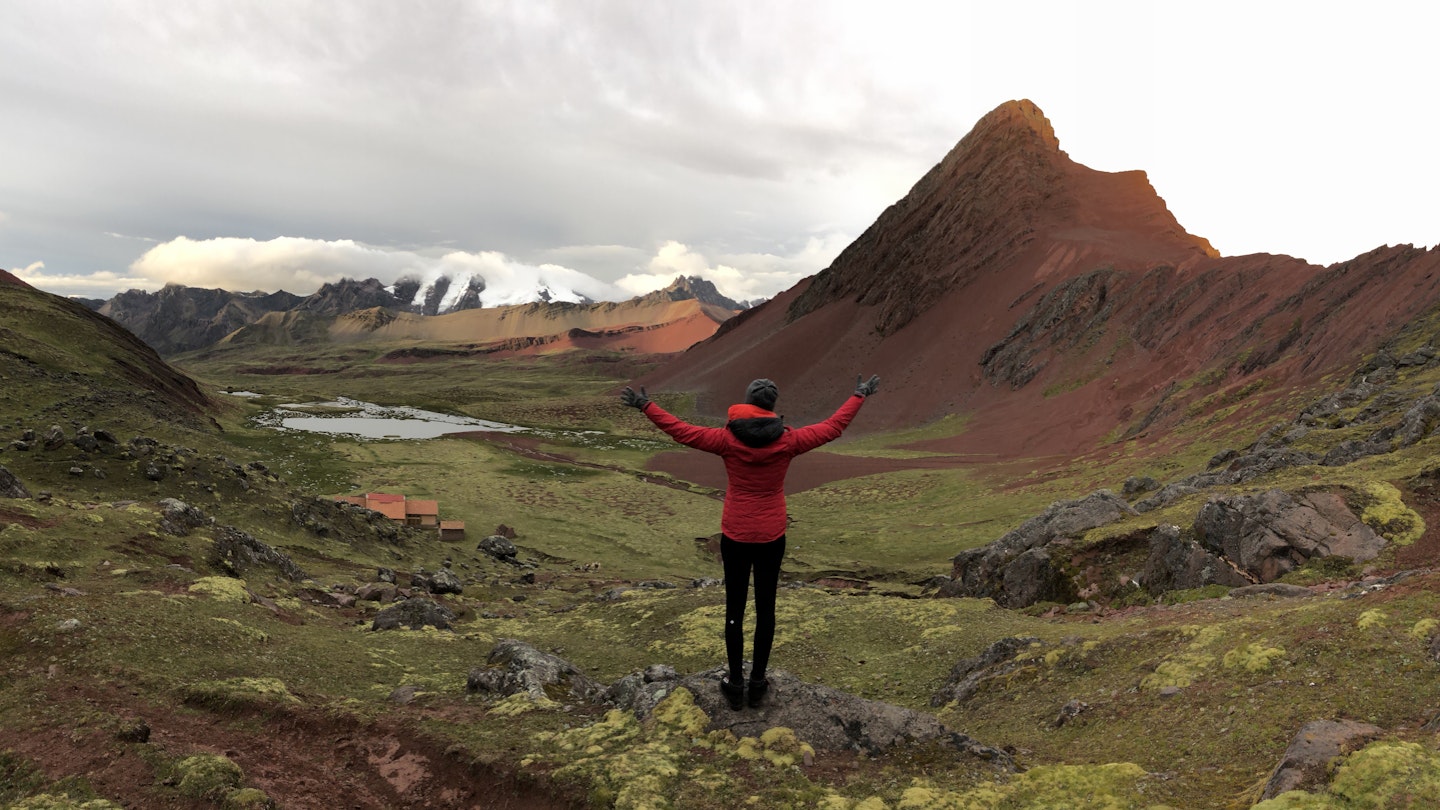Explore the Stunning Ausangate Mountains in Peru
When you think of Peru, Machu Picchu instantly comes to mind. Or maybe the Sacred Valley or perhaps Rainbow Mountain. These awe-inspiring sites are all worth visiting, no doubt. However, when you need a bit more elbow room and a lot more solitude, a trek through the Ausangate Mountains is a welcomed respite and just as gorgeous.
For this particular trip, I chose Ausangate, one of the highest treks in Peru. Along with my guide Bruno Lopez from Andean Lodges, we followed in the footsteps of the Incas, navigating the extensive system of ancient trails created by llama herders.
The scenery is breathtaking, with snow-capped peaks, turquoise lakes, and fields of roaming llamas and alpacas. An added bonus: it’s one of the least crowded hikes, allowing for a day of trekking where you might only see a few other hikers.
“It’s one of the most beautiful places in Peru,” says Lopez. “The opportunity to immerse yourself in the indigenous communities and their ancient way of life is truly special.”
Preparing for the Trek
We begin our adventure at a steady pace. The two-day trek should be considered an intermediate-level hike, but it can be strenuous due to the altitude. It is advisable to acclimate in Cuzco for a few days before embarking on this journey.

Gradually, we ascend through a valley known for being home to some of the highest potato crops in the world. Before long, we’re greeted by a herd of about 100 alpacas, many of which look freshly groomed. Their cropped wool and fluffy tops make them look even more adorable.
As we hike, we pass through millions of years of geologic history, with granitic cliffs, tumbling streams, and limestone forests surrounding us. The dramatic scenery, as explained by Lopez, was shaped by tectonic forces, with minerals like silver, copper, and iron scattered throughout the region. This is why several mountains could be considered “Rainbow Mountains,” making it a geologist’s paradise.
A Scenic Finale
At sunset, we climb a rocky hillside to witness breathtaking views. To the left, the snowy peaks known as Nevado del Inca stand majestically, while to the right, vibrant green grass and moss-covered rocks dot the Ausangate mountainside. Directly ahead, the vivid hues of the Red Valley shimmer, complemented by a bright blue lagoon where llamas graze.
We arrive at a cozy lodge run by Andean Lodges, greeted by a warm meal that rivals the best cuisine in Cuzco, paired with coca tea to alleviate altitude sickness.

Onward and Upward
After a hearty Andean breakfast, we load our gear and resume our hike, donning rain jackets as hail begins to fall through the fog. Within minutes, snowflakes start to drift down, instantly enhancing the magic of the sweeping landscape.
After a few hours of trekking, I observe lines of large white polka dots crisscrossing a distant red mountain. Lopez clarifies that it’s actually just snow filling in the llama footprints.
These scenic treks are truly appealing; the scenery is outstanding. According to Pepe Lopez, owner of Apumayo Expediciones, travelers come from the USA, Canada, and Europe to experience the Ausangate Mountains while simultaneously supporting this isolated community.
“Andean Lodges incorporates the traditional knowledge of the local communities to help them integrate into the modern economy,” says Dan Austin, owner of Austin Adventures, which customizes trips to Peru. “It is vital to return the work to the llama herders.”

After two days, our adventure concludes at Rainbow Mountain, a 17,000-foot-high social-media sensation. Created by mineral deposits, its psychedelic bands of turquoise, lavender, red-violet, and gold create a spectacular vista. While this is an incredible finale, it also marks the end of the solitude we’ve enjoyed; Rainbow Mountain is just one small part of a vast, colorful mountain range. Thus, if you only visit for Rainbow Mountain, you miss the bigger picture.
Tips for Travelers: Andean Lodges programs last from two to seven days and include bus transportation, guides, eco-lodge accommodations, first aid/oxygen supply, and meals. To make the most of your experience, the best time to visit is between March and November.





